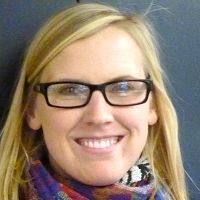Foster etal., 2016
The 2016 Kirk Bryan field trip: Quaternary landslides, fluvial terraces, and recent geomorphic events along the Colorado Front Range.
Foster, M.A., Anderson, R.S., Rindfleisch, P.R., Birkeland, P.W., Redwine, J.R., Pitlick, J., and *Glade, R.C. (2016)
In Keller, S.M., and Morgan, M.L., eds., Unfolding the Geology of the West: Geological Society of America Field Guide 44, p. 267–289
-
Boulder, GRAD STUDENT
-
Boulder, INVESTIGATOR
-
Boulder, GRAD STUDENT
Abstract
During the Quaternary, large deep-seated landslides were initiated along the eastern flank of the Colorado Front Range, and rivers cut and deposited large strath terraces along the western High Plains. These are the most extensive and prominent geomorphic features in the landscape. On this field trip, we will explore the Quaternary evolution of these Front Range features, in addition to viewing the smaller erosion scars and deposits associated with a 1000-yr precipitation event in 2013. We begin the trip near Golden, Colorado, where we will view the most extensive Quaternary strath terrace (Rocky Flats) preserved in the Denver Basin. We then head to Boulder, Colorado, to view the contrast between recent debris flows and deep-seated Quaternary landslides. Near Lefthand Creek, north of Boulder, we will view a suite of strath terraces and discuss the cosmogenic radionuclide dates that indicate both rapid incision and a new version of the terraces ages. Throughout the day, we will focus on the geomorphic work done by rare events, as well as discuss numeric and relative dating of Quaternary terraces and landslides.
Citation
Foster, M.A., Anderson, R.S., Rindfleisch, P.R., Birkeland, P.W., Redwine, J.R., Pitlick, J., and *Glade, R.C. (2016): The 2016 Kirk Bryan field trip: Quaternary landslides, fluvial terraces, and recent geomorphic events along the Colorado Front Range. In Keller, S.M., and Morgan, M.L., eds., Unfolding the Geology of the West: Geological Society of America Field Guide 44, p. 267–289. DOI: 10.1130/2016.0044(12)
Explore Further



